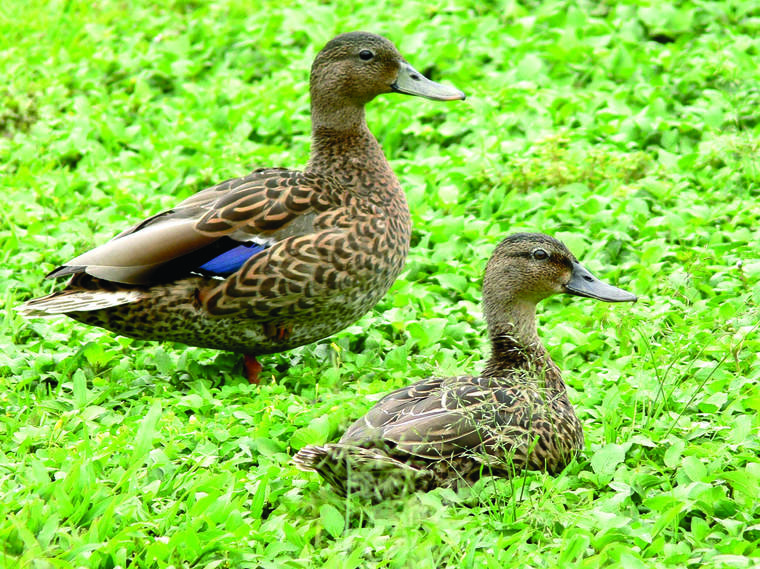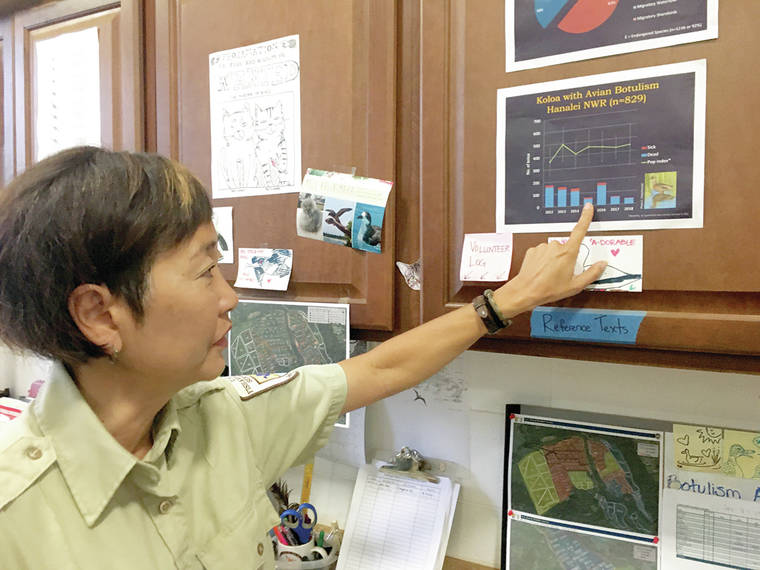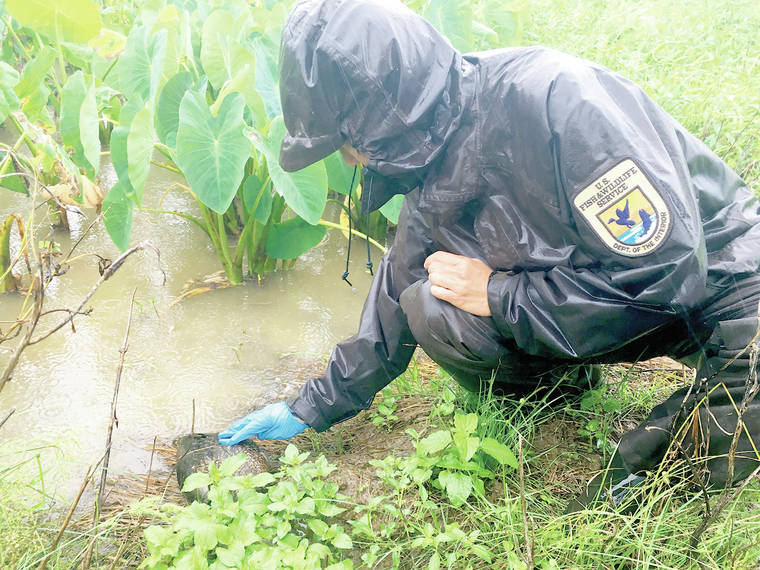HANALEI — Even on a rainy and windy day in Hanalei, U.S. Fish and Wildlife biologist Kim Uyehara gears up to go out and check the taro lo‘i in the Hanalei National Wildlife Refuge for dead or dying birds.
Rubber boots and rain gear are a necessity out in the frequent wet weather, and everyone keeps an eye on the Hanalei River as they travel between the managed wetland and the lo‘i (field) on the refuge, just in case the water starts to flood the main road.
Rain or shine, though, Uyehara and her team of USFWS staff and volunteers are scouring the refuge for signs of avian botulism, a disease that’s killing endangered koloa ducks and other water birds. Avian botulism can paralyze waterbirds and end in death. It kills fairly rapidly and mainly affects water fowl, particularly the koloa ducks that sift through the muddy wetland shallows for bugs and other food.
“It’s like a kind of food poisoning for birds, and it affects the koloa ducks disproportionately,” Uyehara said. “Sometimes it’s called ‘the disease of dabbling ducks.’”
Since July, the team has found 140 sick or dead birds in the refuge, the majority being koloa ducks. That’s a high count, Uyehara said.
The refuge is one of the only places on Earth where the endangered koloa duck is still a wild population with pure koloa genetics. The endemic Hawaiian ducks are small and brown, resembling a mallard. They’ve interbred with feral mallards in most of the main Hawaiian Islands, except for Kauai.
Avian botulism is passed on through their food chain and can be passed from animal to animal if dead birds decompose enough to attract maggots that then become food for healthy birds.
The naturally occurring pathogen that causes avian botulism is in the environment, dormant most of the time, according to Uyehara. But, when the right conditions arise, there’s an outbreak, and birds die.
That’s what’s been happening for the past few months at the refuge, with hotspots exhibiting signs of an increased rate of avian botulism.
“We work with the farmers on the refuge, so when we find avian botulism in one lo‘i, we can flush it and usually that clears out the botulism,” Uyehara said. “It doesn’t take long, and fresh, circulating water is good for the taro, too.”
Friday, volunteer Kim Rogers, with the newly formed Friends of Hanalei National Wildlife Refuge group, walked with Uyehara, surveying lo‘i for unusual bird behavior.
About half an hour into the walk, Rogers whistled loudly. She found something.
At the edge of the water was a dead koloa duck. Uyehara donned a blue glove and put the corpse in a bag, along with surrounding material that could have been contaminated.
They found just one bird during that soggy jaunt through the wildlife refuge, and that bird was shipped off to Oahu for necropsy to confirm the suspected cause of death — avian botulism.
Soon, the team would like to refine search techniques, hoping to identify botulism in areas before any birds die.
The secret to achieving that success is dogs.
In 2017, USFWS piloted a program that uses canine and human teams to survey lo‘i for avian botulism, and increased their rate of finding birds astronomically.
“We’re very pleased to learn the dogs performed really well,” Uyehara said, adding they are more likely to find them with trained dogs than on their own.
The team is working on getting a dog and handler to the refuge permanently in 2020.
Volunteers are always needed to walk the perimeter of the lo‘i within the Hanalei Wildlife Refuge.
“We found that we still need humans. The best combination is still humans and dogs,” Uyehara said. “Detection rate with just dog/dog teams was somewhere around 77%, but we were hitting 100% detection in our trials when we were working with human/dog teams.”
•••
Jessica Else, environment reporter, can be reached at 245-0452 or jelse@thegardenisland.com.





